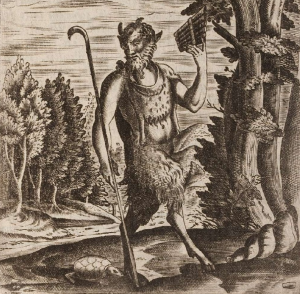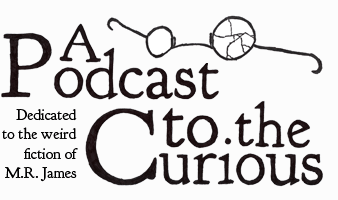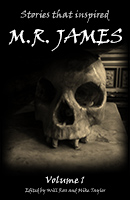 Today we head to East Anglia for a round of golf in the company of enthusiastic James fan H.R. Wakefield. No whistling ‘ere though – you might just wake up something nasty…
Today we head to East Anglia for a round of golf in the company of enthusiastic James fan H.R. Wakefield. No whistling ‘ere though – you might just wake up something nasty…
- Wakefield published seven volumes of ghost stories between 1928 and 1961, but also wrote three detective novels and two non-fiction ‘true crime’ studies.
- He served in the military and as a private secretary to his father, a bishop, before moving to the publishing industry, where he spent most of his working life and which is reflected in a lot of his stories. He was also a keen sportsman, reflected in his stories which feature a lot of golf!
- Much of his personal life was opaque until recently, when Barbara Rodin tracked down a living relative. The picture she painted of Wakefield was not entirely endearing. Barbara’s introduction to the Ash Tree Press edition of Old Man’s Beard, Wakefield’s third volume of ghost stories, sets out this more intimate biography (trigger warning for the tormenting of small children and cats).
- M.R. James wrote that Wakefield’s first volume of ghosts stories, They Return at Evening “gives us a mixed bag, from which I should remove one or two that leave a nasty taste. Among the residue are some admirable pieces, very inventive.”
- True to this description, many of Wakefield’s ghost stories contain brash and depressing misogyny. This is especially so in those stories written after his first volume and, perhaps as a result, we can’t find any of his collections in print. Ash Tree Press editions of his volumes of ghost stories are however available as ebooks and include Rodin’s honest assessment of his writing.
Podcast: Play in new window | Download
Subscribe: RSS








Welcome back! Great episode as always. I’m delighted to hear that you’re covering an R.H. Malden story next. (I was actually typing a suggestion that you do so when you announced it — how spooky!) I’m quite fond of “The Sundial,” “The Dining-room Fireplace,” and “The Priest’s Brass” (all from Malden’s collection “Nine Ghosts”).
I also have a bit of an oddball suggestion for another James-inspired author to cover, or at least to mention: James Bellairs, writer of “The House with a Clock in its Walls” (recently mangled into a Hollywood movie). There are a surprising number of Jamesian references in Bellairs’ children’s stories. The sequel to “Clock in its Walls” features a very “School Story”-like spectre who wants to drag the protagonist into a well, and a character from another book receives a curse similar to that from “Casting the Runes.” The most direct homage, however, might be the child in “The Revenge of the Wizard’s Ghost” who nearly gets his face sucked off by the cloaked cuttlefish from “Count Magnus.” Returning to Bellairs’ books as an adult after having read M.R. James, these references rather leap out at one.
Cheers!
It’s really no surprise to learn he was a James fan considering the genuine creepiness in sections of ‘The Face in the Frost’. Just at the beginning, in the wizard Prospero’s cellar, the bit about the thing he thinks might be a ghost down there, or the descriptions of the moths that assail them – all very Jamesian.
Hi David! Thank you for listening and your suggestions. Will have to check out Bellairs and Revenge of the Wizard’s Ghost.
For everyone reading, RH Malden’s stories are available online here: http://gutenberg.net.au/ebooks06/0605461h.html
The 17th Hole story can be found on page 62 at the following link:
https://ia800609.us.archive.org/28/items/Twilight_Zone_v04n04_1984-10_noads/Twilight_Zone_v04n04_1984-10_noads.pdf
Thankyou for this link! I enjoyed the podcast and then reading the story for myself.
Re-reading my comment, I see that I got author JOHN Bellairs’ name wrong! ‘Doh!
https://en.wikipedia.org/wiki/John_Bellairs
Will wonders aloud whether there was ever a ‘best of’ volume of Wakefield. Yes, in 1978 John Murray Publishers Ltd brought out The Best Ghost Stories of H Russel Wakefield in hardback, edited by Richard Dalby.
It’s so good to hear you guys again!
Regarding the ‘glands’ thing, I think that may be a casual reference to a popular ‘junk science’ of the time – that some kind of lack of vigorous glandular function might make a man meek and unambitious or something like that.
The quickest reference I can find is the first paragraph of this::
https://academic.oup.com/ahr/article/118/4/1052/43593
Mike J – yup, it’s quite a common excuse of the time. The extreme version is John R. Brinkley (the “goat gland” pseudo-doctor). Often it was indeed related to manliness, but covertly, with coded talk about “vigour”.
As someone who’s done a fair bit of work around golf clubs (firework displays), I should explain how it usually seems to work. The Club Secretary is the male equivalent of the Queen Bee; they are usually retired from a powerless job, and their occupation in practice is to enforce their idea of proper behaviour (i.e. just a bit more racist and misogynist than is acceptable in normal life) and exclude those who don’t conform. There is a groundsman or several working for the club; the secretary would make decisions about the course (getting them rubber-stamped by the club committee when it eventually meets), and the groundsmen would do the actual work. The Pro is basically a support scheme for the 99% of professional golfers who can’t make a living off tournaments; every club of sufficient size is meant to have at least one, and they provide paid instruction to the members, but they are looked down on as mere workers (even by those who are mere workers themselves outside the club). The “pro shop” is basically the on-site supplier for equipment (and general sport-related tat), as well as for booking the services of the pro.
Golf club people are the sort of people who will employ a crew of fireworks technicians to be on site from noon to midnight and then be shocked and offended that they want access to a loo.
A very interesting episode. I’ve enjoyed several of H.R. Wakefield stories but as Mike and Will rightly say the collections do tend to be a mixed bag. It does seem that his stories declined in quality in later volumes. Aside from stories mentioned in this episode I also really enjoyed ‘Blind Man’s Buff’ from the second collection. It’s such a simple but effective haunted house tale. The two true crime essays mentioned in the notes – on the Green Bicycle Case and the French serial killer Henri Landru – are also well worth checking out.
Great – a new one from the lads! The “Golf and Ghoulies” genre of ghost stories is not a particularly rich goldmine but listening to you two talk about it was enjoyable. I don’t think that I was the only one who laughed every time “bashing balls” or its variant was mentioned!
I think you confused “glands” with “gonads”.
Great episode, and credit to you guys for calling out Wakefield’s misogyny. We shouldn’t be glossing over that kind of thing, and frankly it makes me much less likely to read his work.
You were totally right about this type of mysogyny, it does give the story a nasty vibe all around. I don’t feel like I want to read any of Wakefield’s work, maybe someday.
My recommendation is the writer Vernon Lee, a female writer of weird fiction that isn’t as well-known today. Her story A Phantom Lover in her collection Hauntings. I’m not sure how Jamesian her writing is, though.
Thank you! It’s a shame as otherwise I think he’d be like a cross between EF Benson and MP Dare – which would be a lot of fun!
I dont disagree with a word you’ve said about Wakefield and this story BUT watch the opening five minutes of the horror film, It Follows …